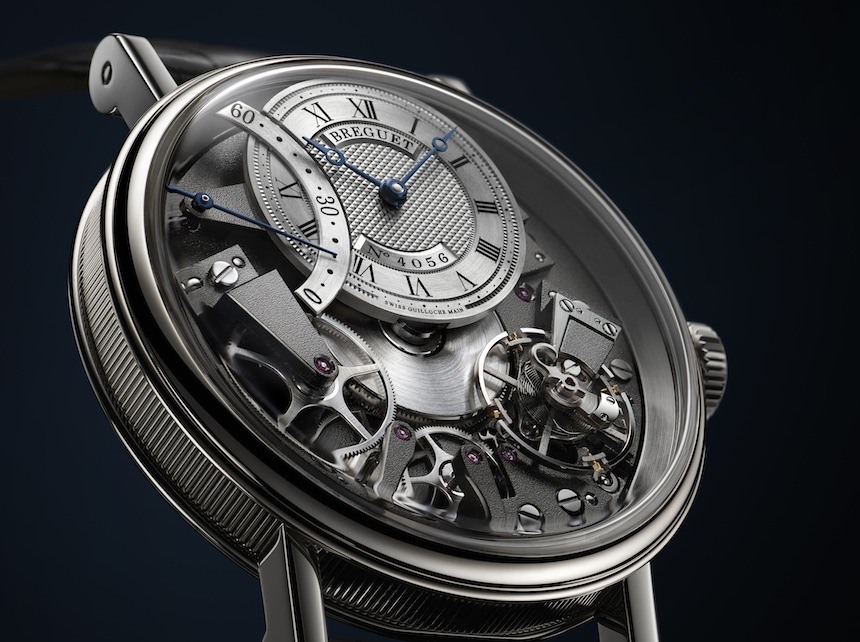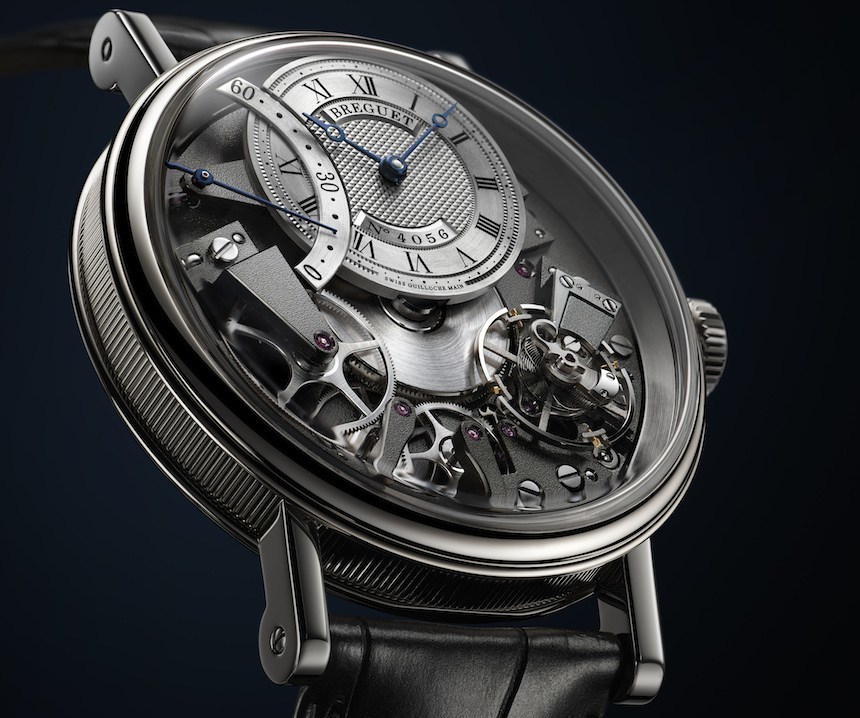
Designing a watch of any kind is an extremely complex and demanding challenge – and that should come as no surprise – however, creating a piece that is intended to embrace hundreds of years of heritage while also working well aesthetically and technically in a 21st century environment, undoubtedly, is an even more demanding task. With the Tradition line of watches, Breguet went on to create a design that took on this challenge – and tackled it with apparent ease. The latest offering from this storied company is the Breguet Tradition 7097 Automatique Seconde Rétrograde, and while that name implies most of its new developments, let’s see them now in greater detail.
Abraham-Louis Breguet is regarded as an horological legend and genius. Attempting to do such a name and heritage justice sets the bar rather high, so how has the company that dares stamp his signature on their dials gone about this? Obviously, for the time being, we will dedicate our attention to the Tradition line, and the first answer it gives us is, of course, technical complexity. Breguet, being the master he was, had crafted incredibly beautiful timepieces – for your reference take a look at these two original pocket watches and a carriage clock that he crafted and we saw hands-on just a few months ago – but in watch enthusiast circles, perhaps he is even more respected for his technical achievements.
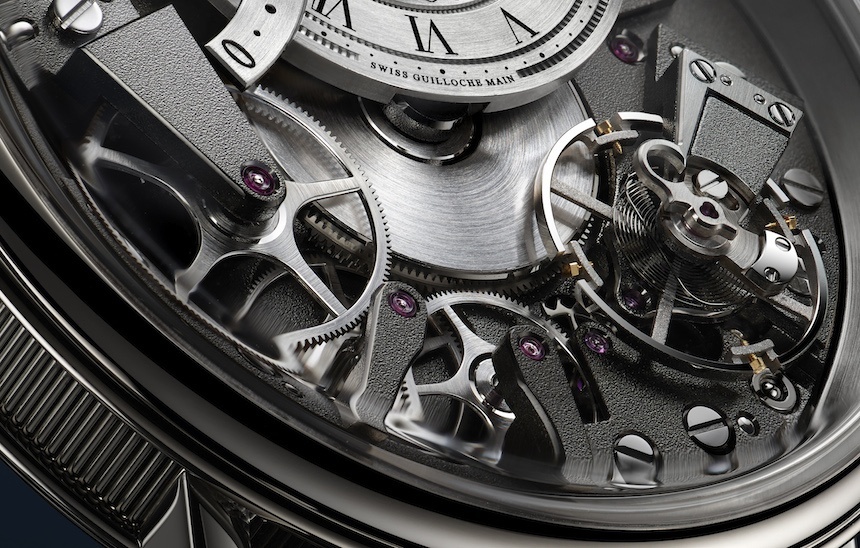
The centerpiece of all Tradition pieces is of course the inside-out layout, wherein nearly all essential components of the movement are visible on the dial side. Specifically, on display are the mainspring barrel (in the very center), the bridges and wheels of the going train (running on the periphery from 9 to 5 o’clock), as well as of course the large balance wheel with the Breguet-curve spring.
The first among the two interesting additions the Breguet Tradition 7097 Automatique Seconde Rétrograde brings is the retrograde seconds hand, a design element that provides a lovely visual treat every minute, as the traditional blued hand snaps back to zero right after it reaches the 60 second mark of a circular grained, arch-shaped scale. The scale intersects the main dial, which is off-set at twelve o’clock and decorated with a traditional hobnail guilloché pattern (commonly seen on many of Abraham-Louis Breguet’s watches), all applied by hand and made complete with deeply engraved, black Roman numerals.
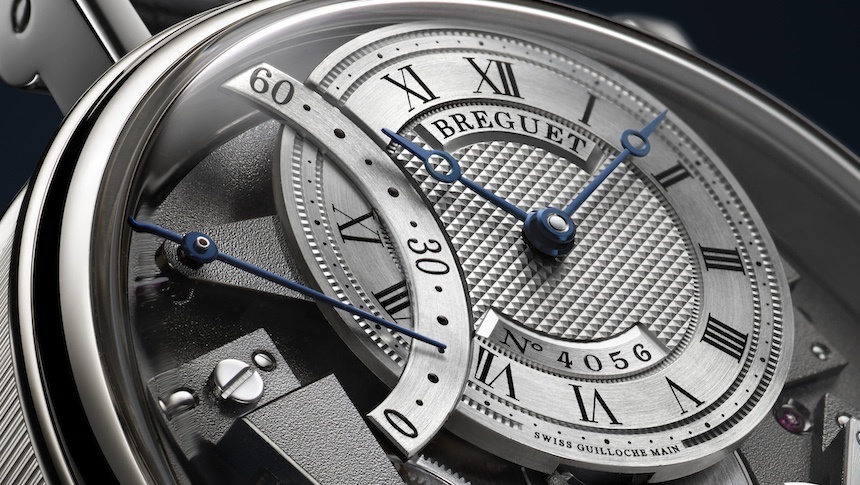
Even with so much going on, this dial retains excellent legibility due to the subtle finish of the plates, the limitation of color (the plates are a full-bodied anthracite, and the dials are in silvered gold), and the enormous, domed sapphire crystal that offers a multi-angled view of the components.
In addition to the retrograde seconds hand, the other main advancement with the Breguet Tradition 7097 Automatique Seconde Rétrograde in comparison to the 7047 is the inclusion of automatic winding. As yet, no images of the case back have been published, but regardless of its styling, its presence elevates the functionality of this model to a level untouched by its predecessors. Even without the auto-weight influence, the watch boasts a 50 hour power reserve, which is more than adequate for such dressy piece. All this technical complexity is made complete by a unique finishing that, although is not unique to Breguet, is seldom seen even on high-end watches.
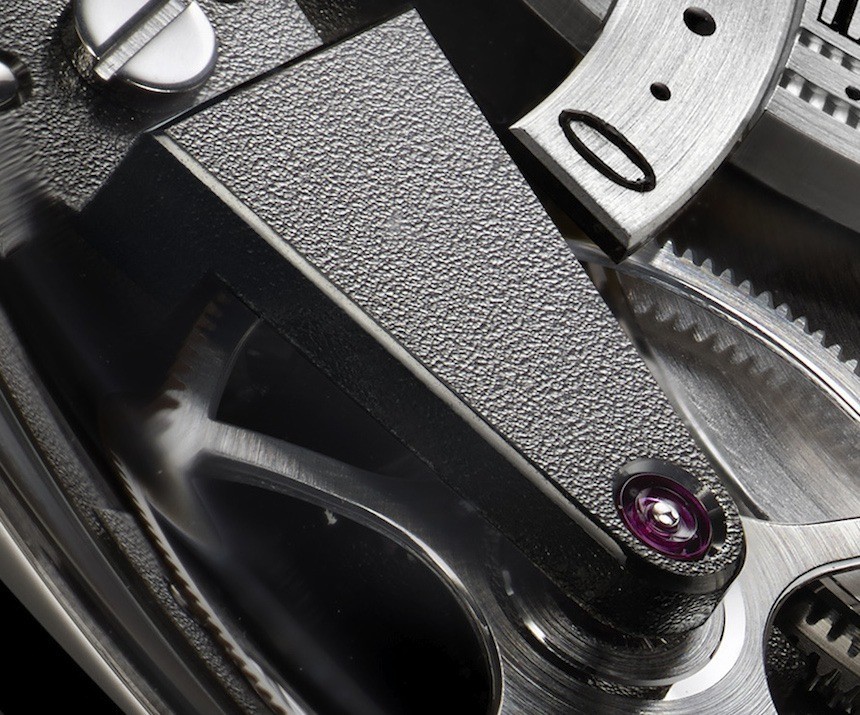
The Breguet Tradition 7097 Automatique Seconde Rétrograde features an unusual and traditional plate finishing technique known as peening. This decoration, which appears to the uniformed eye to resemble sand blasting or “frosting,” is in fact achieved by repeatedly depressing a concave punch into the metal, causing it to flare up around the tip of the tool. This results in a series of uniform “craters.” Getting it right takes serious patience and skill, despite the end result appearing somewhat subdued in comparison to the more flashy and commonplace Geneva-stripe or circular perlage patterns.
What is so endearing about a peened bridge is the humility or, dare I say, the honesty of the finish. When done badly, it draws the eye to all the wrong places and totally ruins the cleanness and enjoyment of the plates, but when done right, it creates this even and rich texture, providing the perfect canvas on which the pure beauty of mechanics can play out. It is, therefore, a bold decision to use this historically accurate finishing technique on a watch that is basically built upside-down, exposing the functional components on the dial in full view. Bolder still was the choice of Breguet to utilize a minimalist dial and retrograde indicator – gambles that have, in my opinion at least, come off with style.
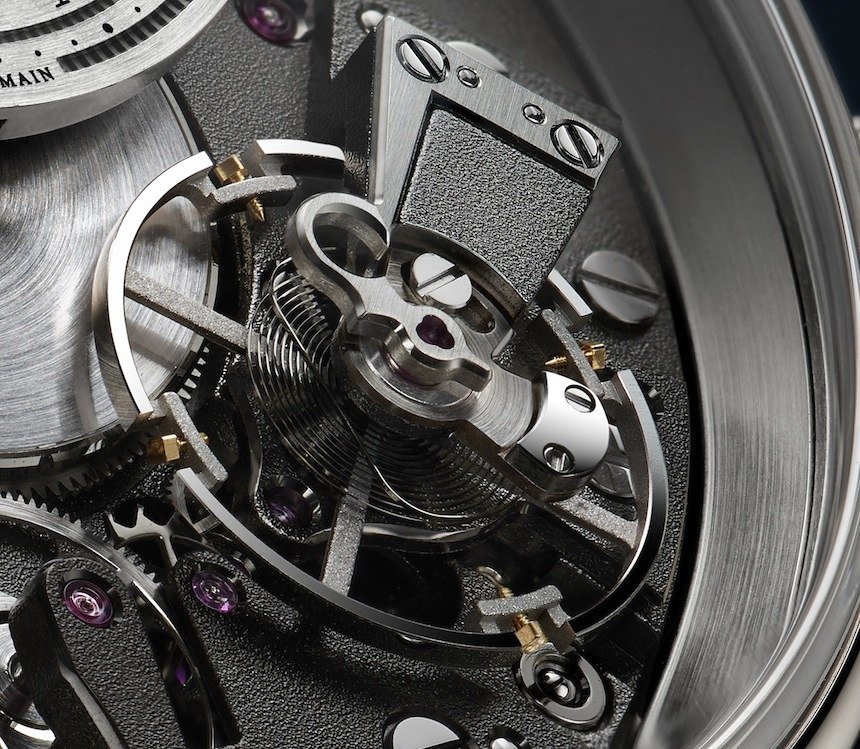
Although the case back is, for now, a mystery, what we can see of the case – available in either 18k white or rose gold – is reason to rejoice. Breguet has stuck with the traditional case-edge fluting so associated with their history, and chosen welded lugs that hark to the days before CNC machining enabled single-piece case middles to be produced with relative ease. The shape of the lugs is sleek and unobtrusive and the fixing points are expertly finished to give no clue of how they cling to the case. Although a minor detail, I am a big fan of the screw-bar that holds the leather strap in place – a far classier touch than a soulless spring-bar.
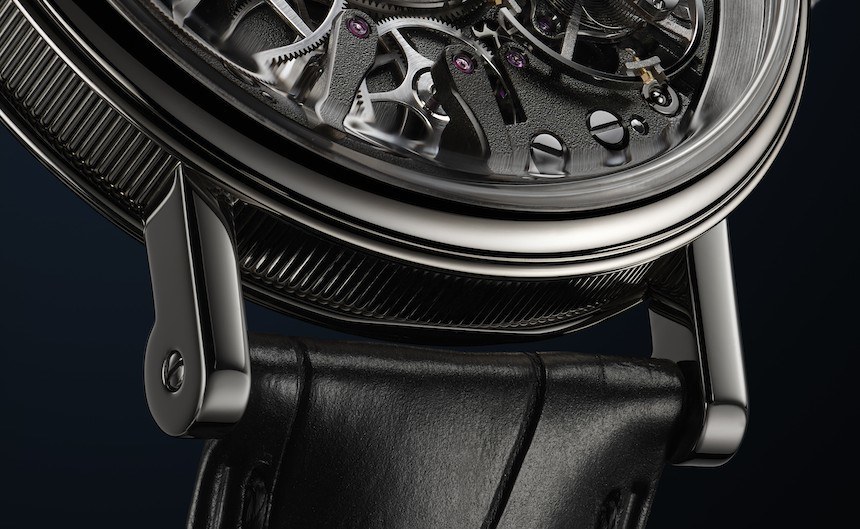
In fact, I find that the brilliance of this timepiece can be pretty much summed-up by that screw-bar: to me, it works as a more straight-forward design element, an open and unguarded reveal of the fact that this is a piece of machinery. There is no trickery, no obfuscation, no corners cut in the production of this piece. The balance cock, with its angular and cutting design made me jump for joy.
The visible screws on the dial, the finish of the wheels on show, the addition of a traditional pare-chute, a Breguet invention to protect the balance staff from external shocks, are even more little details which try and justify the asking price – which will likely fall in the vicinity of the $40,000 mark. Throw into the equation the utilization of silicon pallets and a Breguet overcoil balance spring and you have a watch that offers enough from the old and new schools to keep even the most discerning of watch aficionados entertained. More information will be released at Basel World 2015, and is, in my opinion, well worth waiting for. breguet.com

